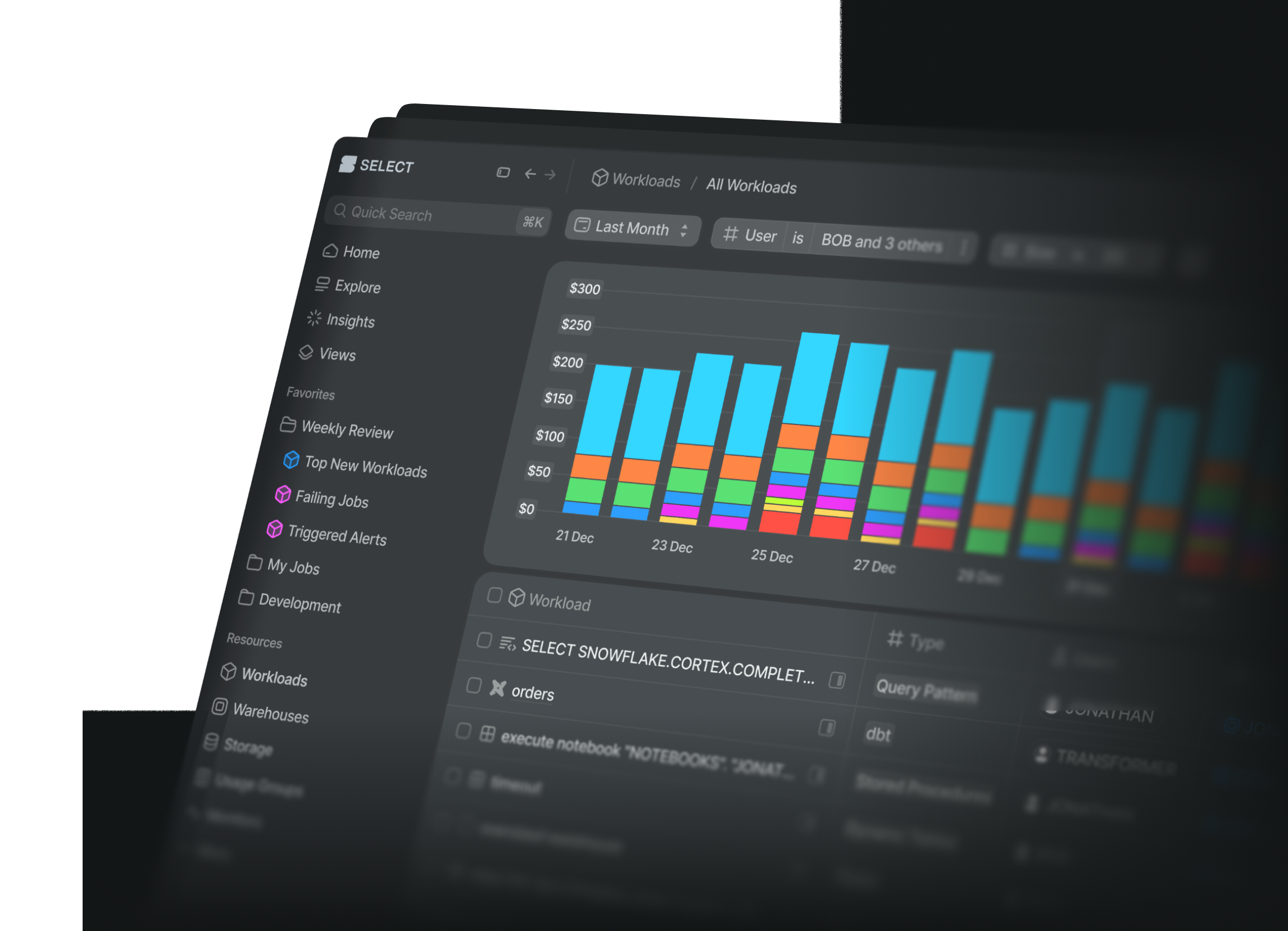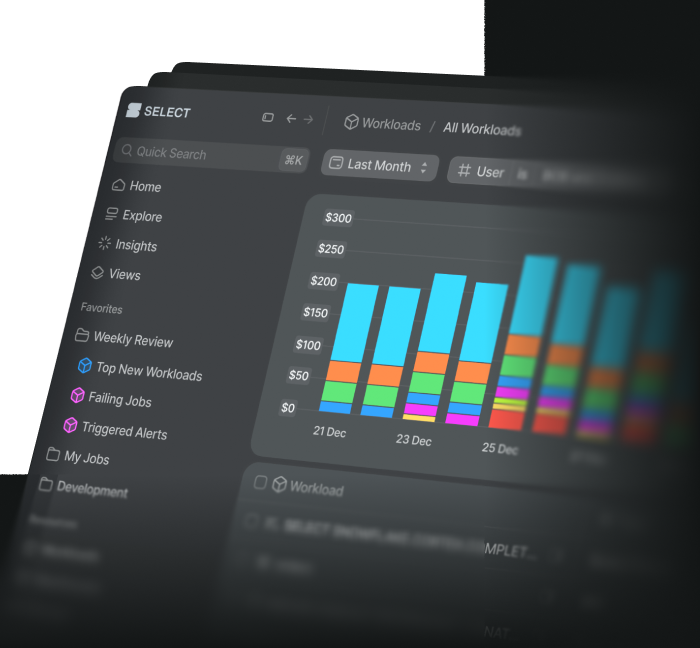While we recommend managing Usage Groups on an ongoing basis via our official Terraform provider, we recognize that not all teams use Terraform or there may be use cases where you want to programmatically create Usage Groups as a one-off.
For example, imagine you want to create a Usage Group per department using a series of object tags you have stored in Snowflake. Alternatively, imagine you have a customer-facing product built on top of Snowflake and want to create a Usage Group for each customer.
The guide below shows how you could accomplish that using our official Usage Groups API.
Prerequisites
Step 1: Create an API Key
To interact with the SELECT API, you'll need to generate an API key and get your organization ID from the SELECT app. Follow the API quickstart instructions to get started.
Your API key must have the usage_groups:write scope and access to the appropriate Snowflake account(s) or organization(s).
Exploring Filter Options
🎯 Before diving into the API, we strongly recommend exploring filter options through the SELECT UI or Terraform documentation:
Option 1: Use the SELECT UI (Recommended)
- Navigate to your Usage Groups page in the SELECT app
- Click "Create Usage Group" or edit an existing one
- Build your filter expression using the interactive filter builder
- Click the "Interactive" toggle and switch to "JSON" mode
- Copy the
filter_expressionfield - this is exactly what you'll use in the API!
Option 2: Browse Terraform Examples
Visit our Terraform provider documentation for comprehensive filter examples and available dimensions.
Option 3: Check Available Dimensions
The available filter dimensions depend on whether your usage group set is scoped to an account or organization:
Account-Scoped Dimensions (most common):
warehouse_name,user_name,role_namewarehouse_tags,user_tags,role_tags,database_tagsresource_type,database_schema_name- And many more...
Organization-Scoped Dimensions:
account_name,region,service_level,usage_typeaccount_name_and_usage_type,account_name_and_warehouse
Complete API Workflow
Step 1: Test Your API Credentials
Step 2: Create a Usage Group Set (if needed)
Step 3: Design Your Usage Group Mappings
Create your mappings based on your business needs:
Step 4: Create Filter Expressions
💡 Pro Tip: Build your first filter in the SELECT UI, then copy the JSON structure!
Step 5: Create Usage Groups Programmatically
Step 6: Managing Existing Usage Groups
Check for existing usage groups before creating new ones:
Real-World Examples
Example 1: Multi-Tenant SaaS Application
Example 2: Environment-Based Cost Tracking
Filter Discovery Tips
🔍 Finding the Right Filter Dimensions
- Start with the UI: The interactive filter builder shows all available dimensions for your specific setup
- Use Terraform docs: Browse real-world examples at registry.terraform.io/providers/get-select/select
- Check your data: Look at your Snowflake
INFORMATION_SCHEMAto understand your warehouse names, user patterns, etc. - Test incrementally: Start with simple filters and add complexity as needed
🎛️ Common Filter Patterns
Best Practices
- 🎯 Start Simple: Begin with basic warehouse or user-based filters before adding complexity
- 🧪 Test in UI First: Always prototype your filters in the SELECT interface before coding
- 📖 Use Terraform Docs: Reference our provider docs for proven filter patterns
- 🔄 Handle Existing Data: Check for existing usage groups to avoid duplicates
- 📊 Monitor Results: Use the SELECT dashboard to verify your usage groups are working as expected
- ⚡ Order Matters: Lower order values take precedence when filter expressions overlap
Troubleshooting
❌ "Filter expression validation failed"
- Copy a working filter from the UI and modify it incrementally
- Check that field names match available dimensions for your scope (account vs organization)
❌ "Usage group name already exists"
- Use the "get existing usage groups" pattern above to check before creating
❌ "API key doesn't have access"
- Verify your API key has
usage_groups:writescope - Ensure the key has access to the specific Snowflake account/organization
- Organization access grants access to all accounts as well
For more complex scenarios, consider using our Terraform provider which provides a more robust way to manage usage groups as infrastructure-as-code.



